Periodontal Disease
Bacteria in your mouth form a sticky film (plaque) on teeth and gums. If not removed, this hardens into a crust (tartar). The bacteria in plaque and tartar can cause an infection called periodontal disease. This can lead to pain, gum damage, bone loss, and even tooth loss. Scaling and root planing is a special type of cleaning done by a general dentist, dental hygienist, or periodontist (dentist specializing in gum and bone problems). This cleaning removes plaque and tartar from beneath the gums. This helps restore health to your gums and teeth.
Healthy Gums
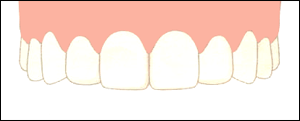
In a healthy mouth, gums are firm. Firm, healthy gums protect teeth and bone.
Infected Gums
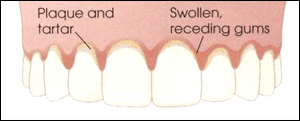
Infected gums bleed, swell, and recede (pull away) from teeth. Teeth may loosen and become sensitive as the bone that anchors them is lost. In advanced stages, teeth may fall out.
Your Evaluation
We looks at your gums for color changes, bleeding, swelling, and recession. Your teeth are checked for looseness and sensitivity. Full mouth x-rays show if there is bone loss around your teeth. You may be asked about your health to see if a medical condition, like diabetes, is contributing to your periodontal disease.
Periodontal Probing
Periodontal Probing Periodontal probing helps measure how advanced your disease is. During probing, a tool (probe) measures the depth of space (called the pocket) between the tooth and the surrounding gum. The deeper the pocket, the more severe the problem.
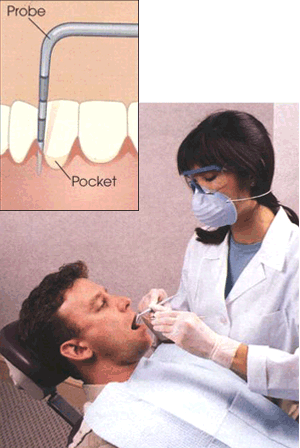 The Procedure
The Procedure
Scaling and root planing removes plaque and tartar from below your gum line. This controls the growth of harmful bacteria. It also helps gums reattach firmly to the teeth. Because this procedure goes deeper than a regular cleaning, your mouth may be numbed. The cleaning may take 1 to 4 or more visits to complete.
Scaling
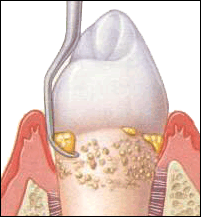
Scaling is a type of cleaning. It removes plaque and tartar from around and below the gum line.
Root Planing
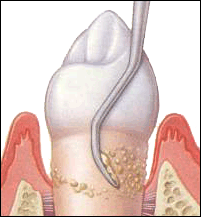
Root planing involves scraping and smoothing the root surfaces of your teeth. Gum tissue can more firmly reattach to roots that are clean and smooth.
After Your Procedure
Your mouth may fee! sore and tender after treatment. Keep brushing and flossing your teeth after each meal. Your dentist may tell you to rinse with warm saltwater every few hours. Pain medication may be suggested if you need it. Ask your dentist if you should use an antibacterial rinse.
Brush and Floss Right!
Brushing and flossing stop plaque and tartar from building up on your teeth. Brush and floss after every meal. Be sure to brush and floss right by following these tips.
Brushing
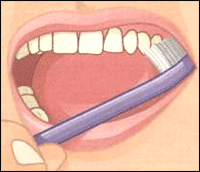
- Use a soft toothbrush and fluoride toothpaste. Ask your dentist if you should use an electric toothbrush.
- Hold the brush at a 45° angle to your gum line. This lets the bristles reach under the gums. Gently brush all surfaces of your teeth with a circular motion.
- Scrub the chewing surfaces.
- Clean the inside of the upper and lower front teeth using the bristles at the tip of the toothbrush.
- Ask your dentist if you should use mouth rinse after brushing.
Flossing
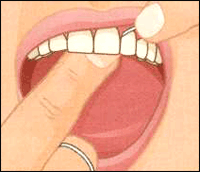
- Ask our staff to recommend the type of dental floss that’s best for you.
- Wrap 12 to 14 inches of floss around your middle fingers. Hold it tight between your thumb and index finger. Or, use a floss holder.
- Ease the floss between your teeth. Rub up and down against the sides of each tooth.
- Floss gently under your gum line where plaque tends to collect.
